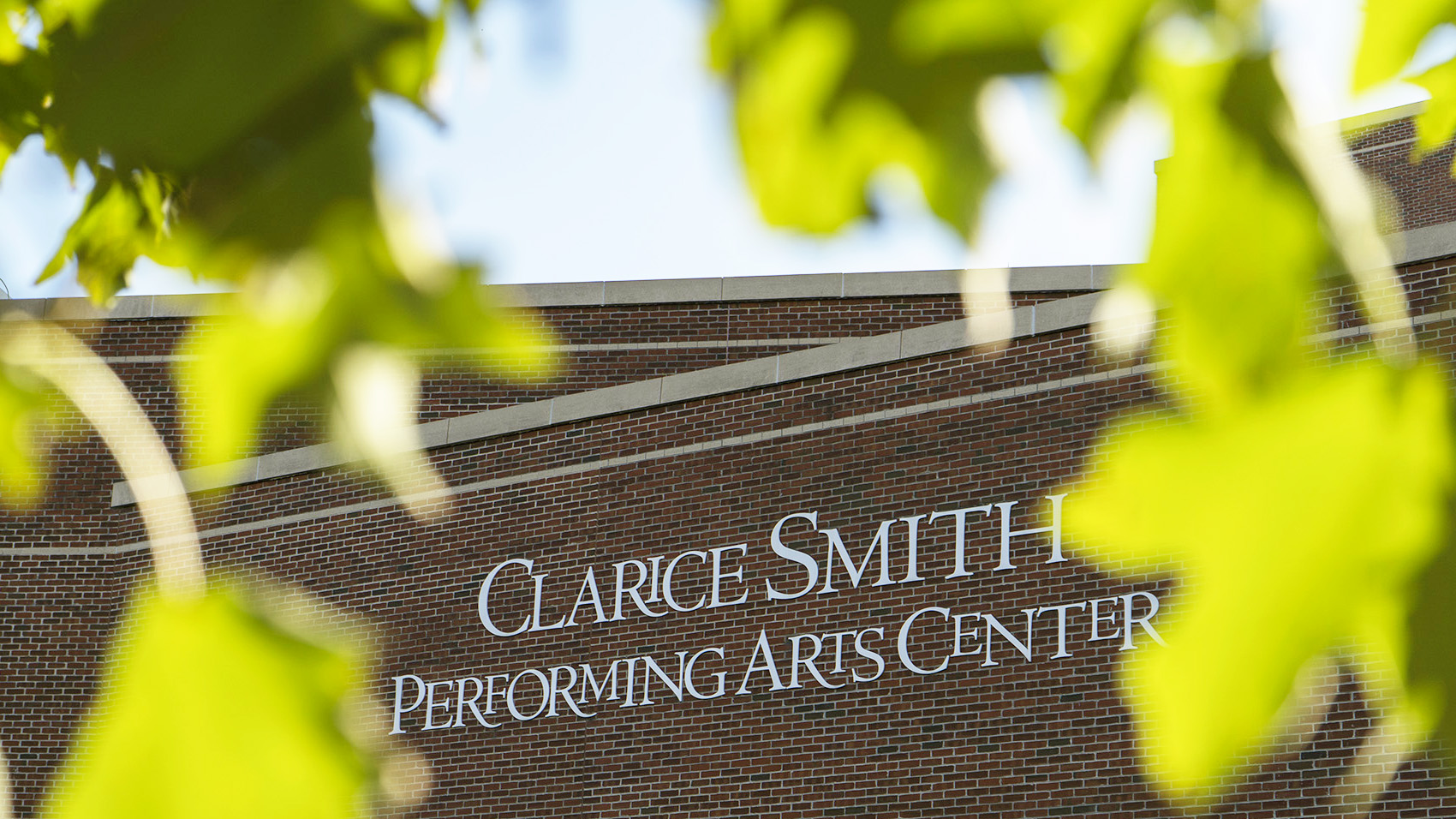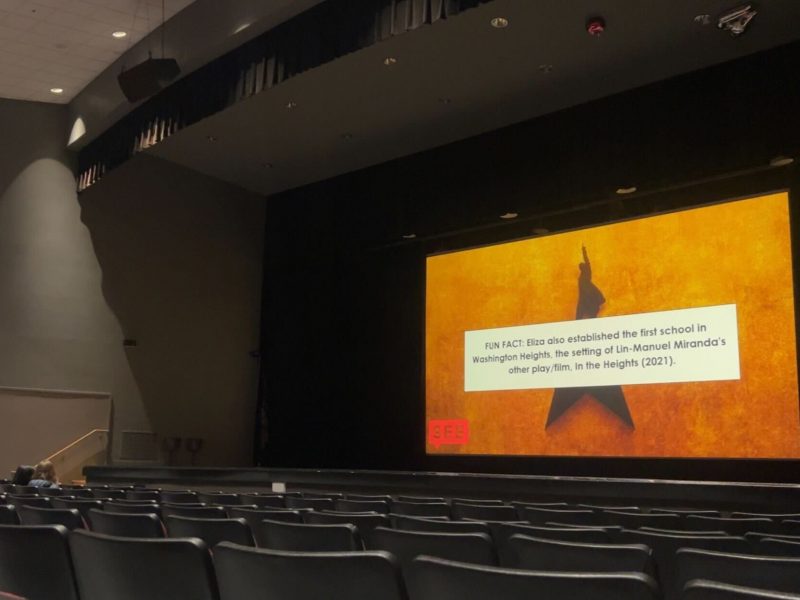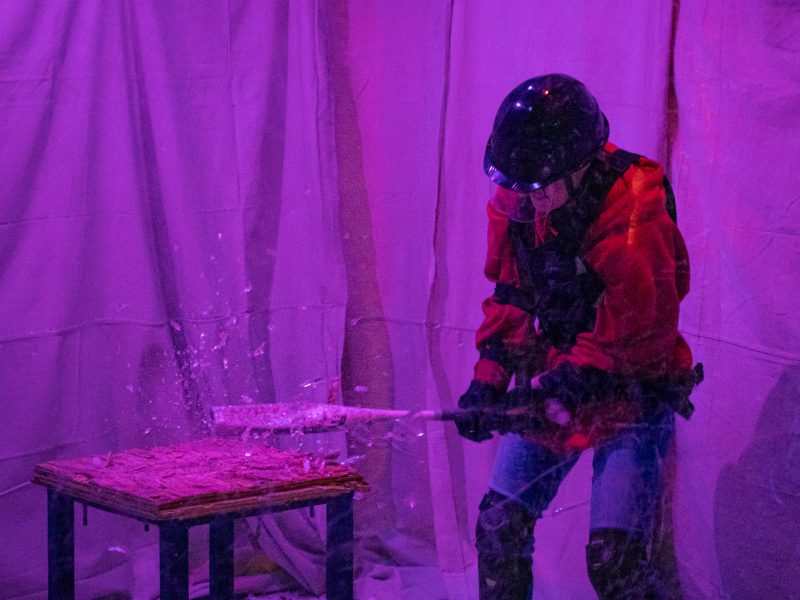This semester’s performances at The Clarice Smith Performing Arts Center at the University of Maryland can be enjoyed in person and virtually, improving accessibility of the arts.
After being entirely virtual last year, performances at The Clarice have gotten closer to normalcy with relaxed COVID-19 regulations. Performances from the music school will be available digitally and in person.
Senior music education major Madeline Swartz, who works in the ticket office, says the virtual option and the flexible pricing are efforts to make art more accessible geographically and financially.
“It’s not always easy to find your way to The Clarice,” Swartz said. “I think it’s a big win for accessibility and getting art out there to more people.”
[From tuxedos to quilt cloaks: The evolution of men’s fashion at the Met Gala]
Gregory Miller, a professor and director of the music school, was in the building nearly every day while students were virtual.
“I thought being there allowed me to let people know that yes, things were continuing,” Miller said.
Now that in-person performances are scheduled and the once-barren rooms are full of students creating and collaborating, Miller says that “life has returned to The Clarice.”
Among the performances being offered dually are this university’s Symphony Orchestra’s “Copland’s Appalachian Spring” on Oct. 8 and the Wind Orchestra’s “Impressions of…” on Oct. 9.
[Burger King’s Chase Hudson Meal is surprisingly not that bad]
A staple performance at The Clarice before the pandemic, “Kaleidoscope of Bands,” with the University Band, Maryland Community Band and the Mighty Sound of Maryland, will be performed for physical and virtual audiences on Dec. 3.
Andrea Brown, the associate director of bands, supports the decision to make virtual options available but thinks streaming audiences will miss something special about live performance.
“You lose that connection, that live connection of being there with the performer with the audience,” Brown said. “I don’t know that we ever really can achieve that through a livestream.”
Brown says the digital experience will be different, especially if there is support for multiple camera angles to make the virtual show a full production.
According to Miller, administration is deciding between providing one angle as a duplicate of the live show or making a virtual experience with multiple cameras to show more than the physical audience can see.
The benefit of a multi-camera production is the freedom to focus on sections of the performance. For example, if the melody is in the woodwinds, the camera can make that clear for the audience, Miller said.
“That provides an educational value in a way, to sort of help the audience learn and understand what’s going on on stage,” Miller said.
Sophomore music performance major Drew Mincey started his musical career at this university under the weight of COVID-19 and virtual collaboration. He now reflects on how last year felt compared to life opening again this semester.
“It was hard to stay motivated to pursue creative projects in such an isolating and uncertain period of time,” Mincey said.
He sees the continuation of virtual offerings as a positive effect of the pandemic.
“I think that digital option just makes our concerts more accessible,” Mincey said. “I’m personally from North Carolina, so it’s nice that my family will be able to livestream events that they can’t make the drive for in person.”
Brown sees the return to in-person collaboration and performing as exciting.
“We’re still riding on that wave of joy just to be back,” she said.
A full list of events and dates can be found on The Clarice’s website. Every show put on by UMD organizations at The Clarice will be “pay what you wish” which suggests prices of $20 for regular tickets and $10 for students.
CORRECTION: Due to a reporting error, a previous version of this story misstated that the performances in the article are put on by The Clarice. The events take place at The Clarice, but are not put on by The Clarice. This story and its headline have been updated.



